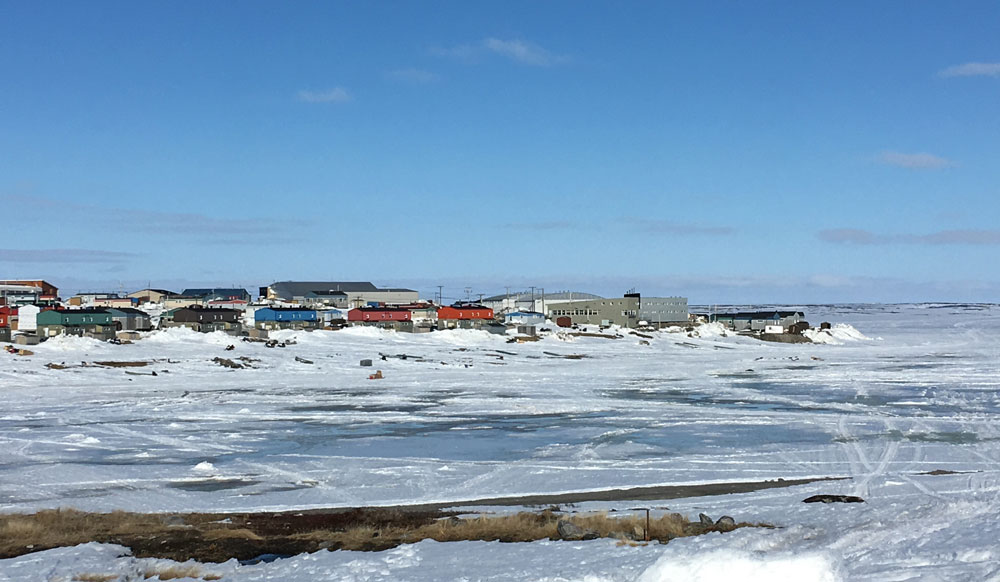
Zoua Vang, Associate Professor of Sociology is leading the first-ever longitudinal study of the impact on 300 Inuit mother-infant pairs of childbirth evacuation from Nunavik to Montreal
Several years ago, Zoua Vang, Associate Professor of Sociology and Associate Member of Obstetrics and Gynecology, was at the Royal Victoria Hospital (RVH) for her own pregnancy tests when she noticed a solitary pregnant Inuit woman.
“I was at the RVH with my supportive husband,” says Vang, “and I wondered about the impact of separation from family and community at such a vulnerable time. I do research on the social causes of adverse birth outcomes and maternal-infant health, so I thought I would look into the situation of pregnant Inuit women so far from home.”
What Vang found out was that Inuit women giving birth far from home is an oft-repeated story in the 14 Inuit villages spread across Northern Quebec.
Of the estimated 300 pregnancies in Nunavik each year, between 80-100 pregnant women, usually at 36 to 38 weeks gestation, make the 1,400-kilometre trek to Montreal for high-risk pregnancy care. The majority of these women are treated at the RVH.
Medical conditions in pregnancy treated at the RVH include severe hypertension, multiple births, preterm labour, gestational diabetes, and births requiring caesarean section. Women with previous C-sections are sent to Montreal, since vaginal birth after a caesarian delivery can cause the mothers life-threatening hemorrhaging.
Losing autonomy over their reproductive health
Most women do not make what can be a harrowing voyage south alone. They are accompanied by an official medical escort who can be a family member, friend or neighbour providing social and emotional support, including language interpretation.
But not all women have an official escort because of employment constraints or limited childcare for older children left behind.
The one-way trip from Nunavik to Montreal takes two hours by jet and five hours by turbo prop, costing $2,300.00 return. This can mean that family members and friends who aren’t official medical escorts can’t afford to attend.
“Childbirth evacuation is intertwined with settler colonialism, which tends to exclude Indigenous values and knowledge in the organization and delivery of health services,” says Vang. “It is part of a larger process involving the medicalization of pregnancy and childbirth, and denies Indigenous women autonomy over their reproductive health.”
Hoping to catalyze community-based social supports
Vang approached the Nunavik Regional Board of Health and Social Services (NRBHSS) to collaborate in a pilot study. That pilot project grew in scope when, last year, Vang secured $1.3 million in funding for research from the Canadian Institutes of Health Research to follow 300 different Inuit mother-infant pairs over five years, while in Montreal, and when they return with their newborns to Nunavik.
Vang is working with co-principal investigator Robert Gagnon of Obstetrics & Gynecology, McGill and MUHC; and co-investigators Elena Labranche, Director of Inuit Values & Practices at NRBHSS; Eduardo Chachamovich, Psychiatry, McGill & Douglas Hospital; and Laurence Kirmayer, Psychiatry, McGill & Jewish General.
The team will conduct depth interviews, administer questionnaires at various stages of the pregnancy and after birth, and analyze the mother’s and infant’s medical files. Researchers will assess each mother-infant pairs’ prenatal stress, ante and postpartum mental health, and infant growth and development, for up to a year.
“I hope that the study will catalyze more community-based social supports and services in both Montreal and Nunavik for Inuit women and their families to ease women’s temporary displacement as much as possible,” says Vang.
